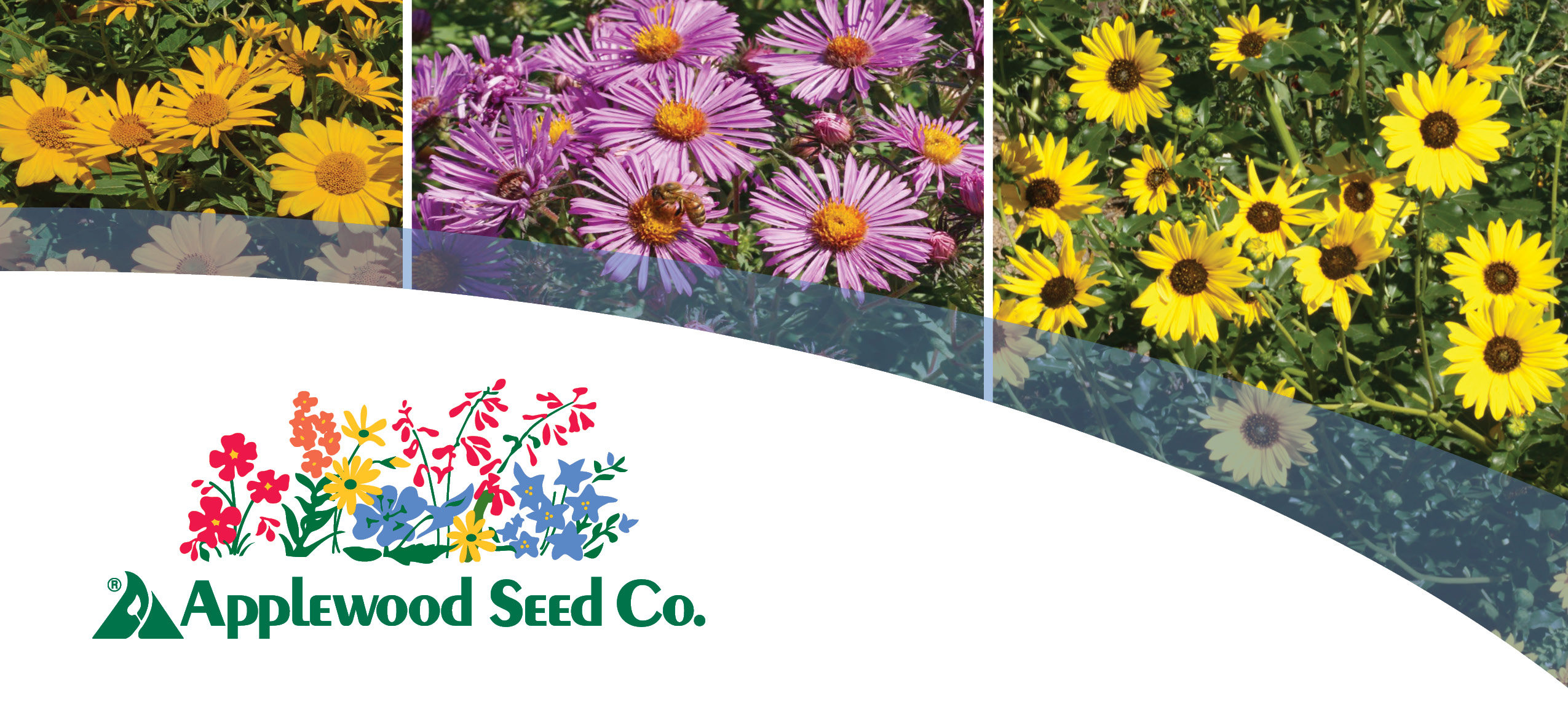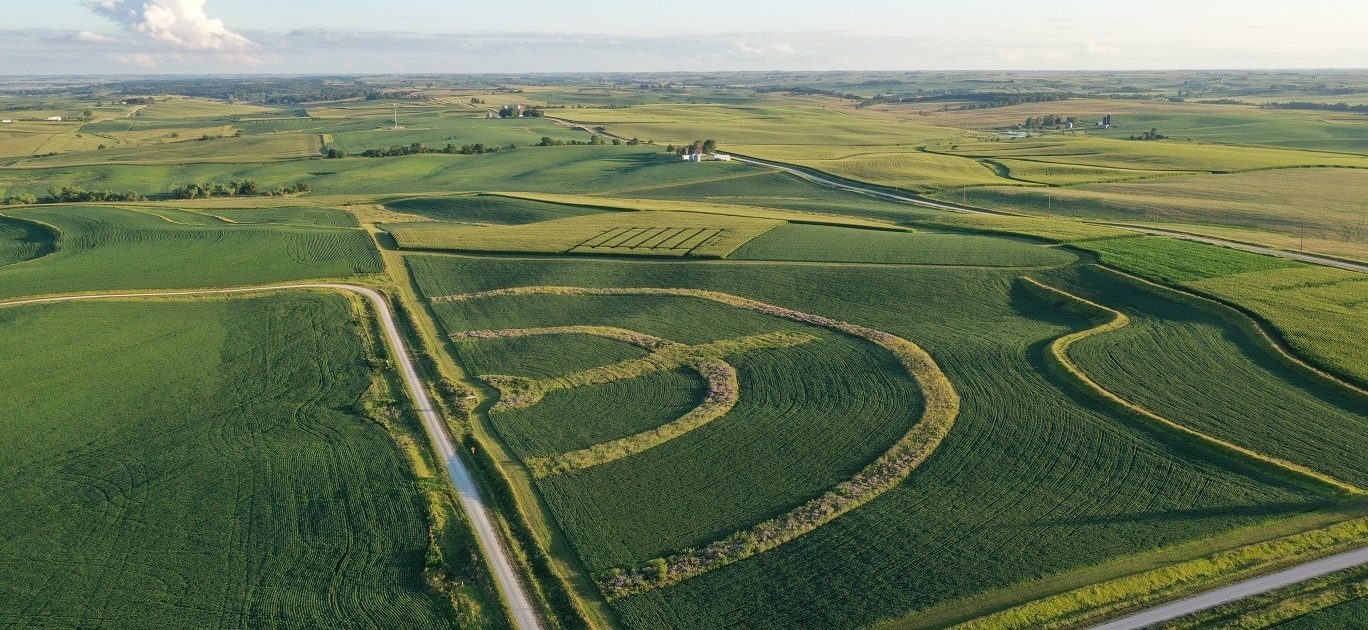
What are Prairie Strips?
Learn more about the CP-43 Prairie Strips practice through the Conservation Reserve Program (CRP)
The CP-43 Prairie Strips practice is a CRP Clean Lakes, Estuaries and Rivers (CLEAR) initiative and is intended to provide benefits to both farmers and the environment in agricultural areas. They are composed of diverse, herbaceous, perennial vegetation that includes both grasses and wildflowers. They must be positioned on the landscape to most effectively deal with soil erosion and water quality while providing food and cover for wildlife and beneficial insects. They generally include stiff-stemmed grasses and wildflowers with deep roots because these are most effective in providing resistance to water flow and sediment movement.

Photo provided by: Omar de Kok-Mercado, Iowa State University
Placement of prairie strips can be made in areas that are not suitable for crops. These include perimeter areas of crop fields, eroded hillsides, terrace channels, on pivot corners, along waterways, or in low-lying, water-bogged areas. The STRIPS research team at Iowa State University has shown that the prairie strips practice is one of the most affordable and environmentally beneficial agricultural conservation practices available.
The prairie strips practice is a win-win situation for both farmers and the environment. These are some of the specific benefits that prairie strips can bring to your farm:
Environmental Benefits
- Reduces topsoil loss
- Reduces phosphorus and nitrogen runoff into waterways
- Enhances biodiversity by providing food and habitat to animals, birds and beneficial insects
Benefits to Farmers
- Provides buffers for wind and rain
- Reduces topsoil loss
- Improves soil health
- Provides water conservation by helping to retain water in the topsoil
- Preserves soil fertility of cropland by reducing runoff of fertilizers
- Enhances the number and diversity of beneficial insects such as lady beetles and lacewings that help control crop insect pests
- Enhances the number and diversity of native pollinators that may enhance crop yields
The requirements for prairie strips will vary by state. Check with your local USDA Service Center to find out the requirements for these mixes. Landowners can help cover the costs of installing STRIPS by applying for cost-share support at their local center. It can take up to 3 or more years to fully achieve a mature prairie strip, but the rewards will be worth it.

Photo provided by: Omar de Kok-Mercado, Iowa State University



Applewood Seed Co. Announces Strategic Leadership Changes to Drive Business Growth
Applewood Seed Co., an employee-owned company, the leading supplier and wholesaler of open-pollinated flower seeds in the U.S., proudly announces two pivotal promotions within its leadership team. Mary Gomane has been promoted to Vice President of Sales & Production and Joe Eenigenburg has advanced to the role of Director of Sales & Marketing. These strategic […]
Using Flowers as Nature’s Solution to Water Conservation
In the realm of commercial landscaping, traditional turfgrass lawns still reign as the go-to for public and private projects. However in recent years, the practice of replacing turfgrass with flowers has steadily gained popularity, not only for the aesthetic appeal but specifically for the positive impact on water conservation and cost reduction.